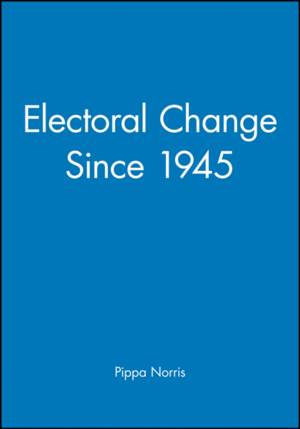
Door een staking bij bpost kan je online bestelling op dit moment iets langer onderweg zijn dan voorzien. Dringend iets nodig? Onze winkels ontvangen jou met open armen!
- Afhalen na 1 uur in een winkel met voorraad
- Gratis thuislevering in België vanaf € 30
- Ruim aanbod met 7 miljoen producten
Door een staking bij bpost kan je online bestelling op dit moment iets langer onderweg zijn dan voorzien. Dringend iets nodig? Onze winkels ontvangen jou met open armen!
- Afhalen na 1 uur in een winkel met voorraad
- Gratis thuislevering in België vanaf € 30
- Ruim aanbod met 7 miljoen producten
Zoeken
€ 86,45
+ 172 punten
Omschrijving
This book explores the nature of electoral change in Britain during the last half century. The period from 1945-70 was the classic era of two-party dominance at every level of British politics: at Westminster, county hall, and in the electorate. Since the early seventies Conservative and Labour hegemony has remained virtually unaltered in Parliament, but their grip has been loosened in local government, and the popular foundations of the two-party system have been eroded among voters.
Why has Britain evolved from a dominant to a declining two-party system during the last fifty years? This study considers alternative explanations for these developments, focusing on changes in voters, parties, and political communications.
The book provides students with a fresh and accessible perspective on theories of electoral change, placing developments in Britain within their broader comparative context, and challenging many conventional assumptions about trends in voting behaviour.
Why has Britain evolved from a dominant to a declining two-party system during the last fifty years? This study considers alternative explanations for these developments, focusing on changes in voters, parties, and political communications.
The book provides students with a fresh and accessible perspective on theories of electoral change, placing developments in Britain within their broader comparative context, and challenging many conventional assumptions about trends in voting behaviour.
Specificaties
Betrokkenen
- Auteur(s):
- Uitgeverij:
Inhoud
- Aantal bladzijden:
- 288
- Taal:
- Engels
- Reeks:
Eigenschappen
- Productcode (EAN):
- 9780631167167
- Verschijningsdatum:
- 23/01/1997
- Uitvoering:
- Paperback
- Formaat:
- Trade paperback (VS)
- Afmetingen:
- 139 mm x 216 mm
- Gewicht:
- 371 g

Alleen bij Standaard Boekhandel
+ 172 punten op je klantenkaart van Standaard Boekhandel
Beoordelingen
We publiceren alleen reviews die voldoen aan de voorwaarden voor reviews. Bekijk onze voorwaarden voor reviews.











